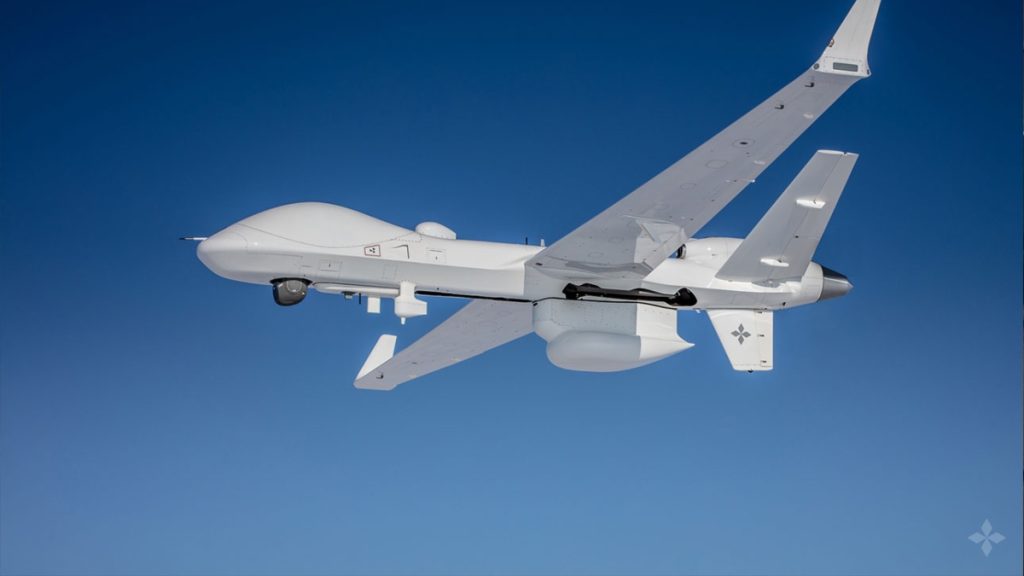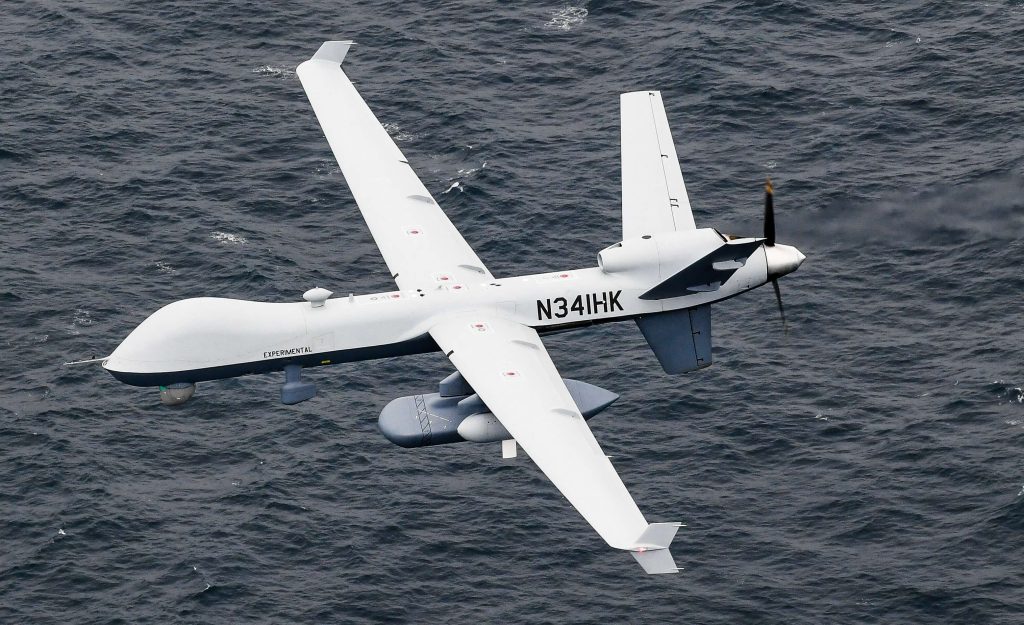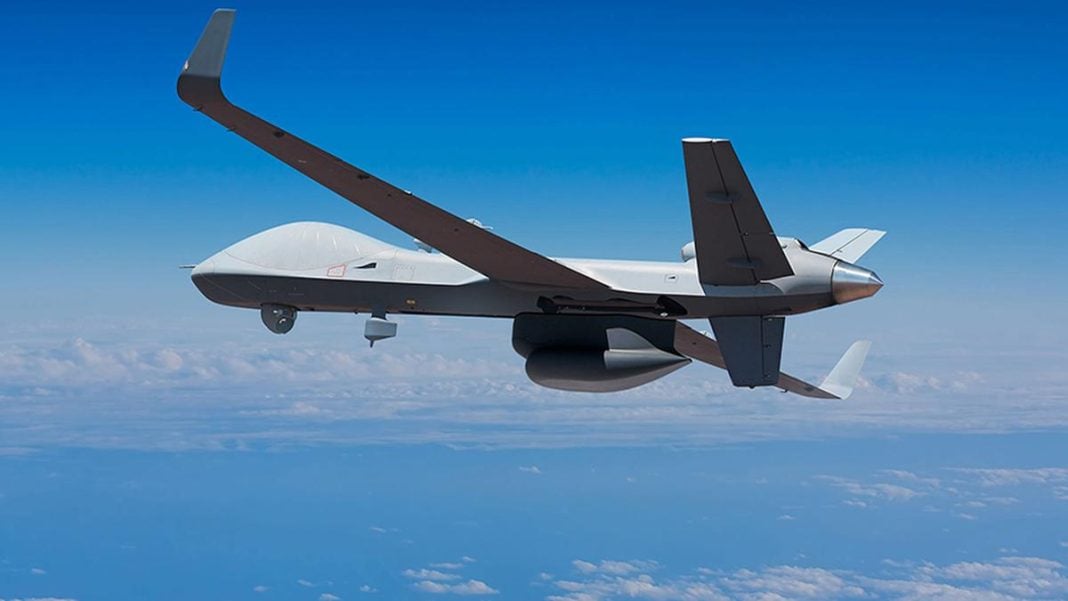An MQ-9B SeaGuardian remotely piloted aircraft (RPA), leased by the Indian Navy from the United States, encountered a technical glitch and crashed into the Bay of Bengal on Wednesday. The drone, which was on a routine surveillance mission, is deemed unsalvageable and will be written off, as confirmed by Indian Navy officials.
The incident occurred around 2:00 PM while the high-altitude long-endurance drone was operating from INS Rajali, located near Arakkonam in Tamil Nadu. According to the navy’s statement, the RPA faced an unrecoverable technical failure mid-flight and executed a controlled ditching at sea off the coast of Chennai.

Manufactured by U.S. firm General Atomics, the MQ-9B SeaGuardian is a variant of the Predator B drones and was leased to enhance the navy’s intelligence, surveillance, and reconnaissance (ISR) capabilities across the vast Indian Ocean region (IOR). Since being leased, these drones have been integral to the navy’s efforts to monitor the strategic waters, especially with increased naval activities by China in the region.
The two MQ-9Bs have collectively logged 18,000 hours of flight time, playing a critical role in the navy’s operations spanning from the Persian Gulf to the Strait of Malacca and from the northern Bay of Bengal to the southeast coast of Africa. The region’s immense strategic importance necessitates continuous and extensive surveillance, which these drones have facilitated.
This incident comes amidst ongoing negotiations between India and the U.S. for the purchase of 31 MQ-9Bs in a deal valued at approximately $3.1 billion. This deal includes weapons, sensors, and extensive logistical support, aiming to significantly boost the ISR capabilities of the Indian military.

Under the terms of the lease agreement, the original equipment manufacturer, General Atomics, is responsible for the operation of these RPAs and will need to replace the lost drone to continue meeting the Indian Navy’s operational requirements.
The Indian government, having adopted new weapon-acquisition procedures in 2020 that allow for the leasing of military equipment, views this strategy as a cost-effective way to enhance military capabilities without the immediate financial burden of outright purchases.
A detailed investigation and report by General Atomics will follow to determine the precise cause of the technical failure and to prevent future incidents. This mishap underscores the complexities and challenges of operating advanced unmanned aerial vehicles in critical regions.





